Papers by Mattia Mancini
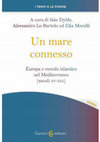
Dyble J., Lo Bartolo A., Morelli E. (eds), “Un mare connesso. Europa e mondo islamico nel Mediterraneo (secoli XV-XIX)”, 2024
Nella prima metà del xix secolo si diffuse in tutta Europa una vera e propria “egittomania” che p... more Nella prima metà del xix secolo si diffuse in tutta Europa una vera e propria “egittomania” che portò alla nascita delle prime grandi collezioni museali di antichità egizie. Tale crescente richiesta di reperti archeologici favorì un ricco traffico che, più per motivazioni fiscali che geografiche, vide in Livorno lo scalo privilegiato. Dal porto labronico passarono infatti i nuclei di oggetti destinati alle raccolte egizie di Torino, Firenze, Parigi, Londra, Berlino, Leida. Oltre a statue, sarcofagi e stele, tra la “merce” più ricercata figuravano senza dubbio le mummie. I corpi imbalsamati, che in precedenza, ad eccezione di sporadiche trattazioni scientifiche, erano stati considerati per lo più “materia prima” per farmaci e pigmenti, nell’Ottocento furono investiti da un interesse collezionistico che non troverà più pari. Anche i registri delle navi provenienti da Alessandria d’Egitto e arrivate presso il porto franco di Livorno annoverano spesso mummie in stiva. Esplorando le fonti archivistiche riemergono quindi le tracce di questo traffico che ebbe un grande impatto nella nascente disciplina egittologica e impressionò i cittadini livornesi dell’epoca.

Egitto e Vicino Oriente, 2020
This paper presents the preliminary report of the 2018 season of the expedition of the University... more This paper presents the preliminary report of the 2018 season of the expedition of the University of Pisa in the area of tomb M.I.D.A.N.05, at Dra Abu el-Naga (Theban Necropolis). The work focused on the archaeological investigation of two small tombs, T1 and T2, previously discovered during the 2010 season on the northern side of the forecourt of M.I.D.A.N.05 and probably contemporary or slightly later than the latter. During the 2018 campaign, the chapel of T1 and most of the first room of T2 were excavated, revealing two different life-stories, which depend on the events and transformations which affected M.I.D.A.N.05 and its forecourt through the centuries. T1, soon sealed by debris and flash-floods, proved to have been solely used in the New Kingdom. Between the end of the Eighteenth and the early Nineteenth Dynasty, the tomb was occupied by the “Chief of the mrw-servants of Amun”, Nany, whose name appears on some sandstone fragments of a lintel and on a beautiful but regrettably fragmentary pair statue, found in pieces. T2 is larger and probably composed of two rooms. It remained accessible for many centuries, until the flood deposits filled it, covering a layer containing at least ten burials, partly cut by robbers’ pits. Only scanty elements of the funerary assemblages were found with the bodies, but various painted plaster fragments, pertaining to anthropoid coffins, date the re-use of the tomb to the Third Intermediate Period.
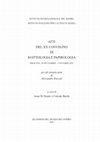
Di Natale A., Basile C. (a cura di), Atti del XX Convegno di Egittologia e Papirologia, Siracusa, 30 settembre – 3 ottobre 2021, «Quaderni del Museo del Papiro» XIX, 2023
Il presente intervento intende illustrare alcuni risultati preliminari del progetto di ricerca “T... more Il presente intervento intende illustrare alcuni risultati preliminari del progetto di ricerca “TEMA - la Toscana Egittologica tra Musei e Archivi”, diretto dalla prof.ssa Marilina Betrò (Università di Pisa). Il progetto si propone di creare una rete di connessioni tra quegli operatori culturali della regione che conservano materiale sulla missione in Egitto dello studioso pisano Ippolito Rosellini e sulla formazione delle collezioni egizie esistenti o comunque passate per la Toscana nella prima metà del XIX secolo. Livorno era infatti all’epoca lo scalo obbligato di tutte le raccolte archeologiche che dall’Egitto arrivavano in Europa e confluivano verso Firenze e altri centri toscani e le grandi collezioni di Torino, Parigi, Londra, Berlino, Leida ecc. A tal proposito, una parte importante della ricerca è stata e sarà effettuata presso l’Archivio di Stato di Livorno che conserva alcuni fondi amministrativi fondamentali per la ricostruzione del passaggio di antichità egizie in Toscana. Molte delle navi arrivate a Livorno da Alessandria o da altri porti egiziani (Rosetta, Damietta, Abukir) nel periodo preso in considerazione (1799-1860) presentano infatti tra la merce trasportata mummie e altri reperti antichi. Tali dati archivistici sono stati poi messi in relazioni con le informazioni ricavate da altre istituzioni culturali, come la Biblioteca Labronica di Livorno, il Museo dell’Opera del Duomo di Pisa e la Biblioteca Universitaria di Pisa, dove sono conservati i manoscritti e i disegni originali del Fondo Rosellini.
Egitto e Vicino Oriente , 2022
This paper will present an unpublished document, kept in the Biblioteca Labronica in Livorno, tha... more This paper will present an unpublished document, kept in the Biblioteca Labronica in Livorno, that corresponds to a list of Egyptian antiquities arrived in the free port of the Tuscan city in 1825. Thanks to a comparation with other archival data, the inventory turns out to be the Italian translation of the original catalogue of the Second Collection of Henry Salt, now in the Louvre Museum, perhaps written by the British Consul General in Egypt himself. The main aim of the article is thus to identify the objects described in the Inventario, recognizing them in the current heritage of the Parisian museum. In addition, every possible source about the history of the document will be analysed.
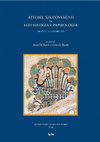
Di Natale A., Basile C. (eds), Atti del XIX Convegno di Egittologia e Papirologia, Siracusa, 30 settembre – 2 ottobre 2021, «Quaderni del Museo del Papiro» XVIII , 2022
Presso Palazzo Schifanoia, storica sede dei Musei Civici di Arte Antica di Ferrara, è conservata ... more Presso Palazzo Schifanoia, storica sede dei Musei Civici di Arte Antica di Ferrara, è conservata un’inedita collezione egizia che rientra nel quadro dell’egittomania ottocentesca diffusasi in Europa dopo le prime
spedizioni scientifiche in Egitto. La raccolta si compone delle donazioni di cittadini ferraresi, che hanno scelto l’Egitto come luogo di residenza e lavoro o come semplice meta di viaggio, fatte alle collezioni dell’Università di Ferrara intorno alla metà del XIX secolo. Nel corso dei decenni successivi al 1850, infatti, sono arrivate in città, insieme a naturalia e reperti etnografici, decine di antichità egizie che hanno portato a una grande eterogeneità di contesti – funerari, cultuali e domestici – e di datazione, andando dall’Antico Regno al periodo greco-romano. La collezione egizia di Palazzo Schifanoia oggi è composta da circa 300 pezzi, quasi tutti mai pubblicati.
L'articolo presenta così la storia della formazione della collezione, ricostruita attraverso lo studio dei documenti d'archivio, e una selezione di oggetti ancora inediti.
Egitto e Vicino Oriente , 2021
The Egyptian collection of the Musei Civici di Arte Antica in Ferrara includes about 600 unpublis... more The Egyptian collection of the Musei Civici di Arte Antica in Ferrara includes about 600 unpublished fragments of papyri. All the fragments belonged to two scrolls – pertinent to the same document – that arrived in Italy in the mid-19th Century and were opened in 1963. This paper presents the iconographic and philological study of these fragments that allowed to recognize at least 4 Book of the Dead spells and to hypothesize a dating to the Ramesside period. It was possible to identify parts of Spells 1 and 15AII text and the partial reconstruction of the “Weighing of the heart” vignette.

EVO, 2020
This paper presents the preliminary report of the 2018 season of the expedition of the University... more This paper presents the preliminary report of the 2018 season of the expedition of the University of Pisa in the area of tomb M.I.D.A.N.05, at Dra Abu el-Naga (Theban Necropolis). The work focused on the archaeological investigation of two small tombs, T1 and T2, previously discovered during the 2010 season on the northern side of the forecourt of M.I.D.A.N.05 and probably contemporary or slightly later than the latter. During the 2018 campaign, the chapel of T1 and most of the first room of T2 were excavated, revealing two different life-stories, which depend on the events and transformations which affected M.I.D.A.N.05 and its forecourt through the centuries. T1, soon sealed by debris and flash-floods, proved to have been solely used in the New Kingdom. Between the end of the Eighteenth and the early Nineteenth Dynasty, the tomb was occupied by the “Chief of the mrw-servants of Amun”, Nany, whose name appears on some sandstone fragments of a lintel and on a beautiful but regrettably fragmentary pair statue, found in pieces. T2 is larger and probably composed of two rooms. It remained accessible for many centuries, until the flood deposits filled it, covering a layer containing at least ten burials, partly cut by robbers’ pits. Only scanty elements of the funerary assemblages were found with the bodies, but various painted plaster fragments, pertaining to anthropoid coffins, date the re-use of the tomb to the Third Intermediate Period.
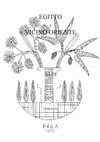
Egitto e Vicino Oriente 43, 2020
Marilina, Betrò; Del Vesco, Paolo; Mancini, Mattia; Taccola, Emanuele
This paper presents the pr... more Marilina, Betrò; Del Vesco, Paolo; Mancini, Mattia; Taccola, Emanuele
This paper presents the preliminary report of the 2018 season of the expedition of the University of Pisa in the area of tomb M.I.D.A.N.05, at Dra Abu el-Naga (Theban Necropolis). The work focused on the archaeological investigation of two small tombs, T1 and T2, previously discovered during the 2010 season on the northern side of the forecourt of M.I.D.A.N.05 and probably contemporary or slightly later than the latter. During the 2018 campaign, the chapel of T1 and most of the first room of T2 were excavated, revealing two different life-stories, which depend on the events and transformations which affected M.I.D.A.N.05 and its forecourt through the centuries. T1, soon sealed by debris and flashfloods, proved to have been solely used in the New Kingdom. Between the end of the Eighteenth and the early Nineteenth Dynasty, the tomb was occupied by the "Chief of the mrw-servants of Amun", Nany, whose name appears on some sandstone fragments of a lintel and on a beautiful but regrettably fragmentary pair statue, found in pieces. T2 is larger and probably composed of two rooms. It remained accessible for many centuries, until the flood deposits filled it, covering a layer containing at least ten burials, partly cut by robbers' pits. Only scanty elements of the funerary assemblages were found with the bodies, but various painted plaster fragments, pertaining to anthropoid coffins, date the re-use of the tomb to the Third Intermediate Period.
Developing Effective Communication Skills in Archaeology, 2020
The chapter analyzes, through case history, the evolution of online communication in the cultural... more The chapter analyzes, through case history, the evolution of online communication in the cultural sector, which has been increasingly developing in recent years. The numerous online platforms available allow a potentially enormous diffusion of cultural contents and allow reaching a very wide audience. Even the archaeological sector has adapted to the new media, but creating a good strategy is often not a simple thing. The blogging platforms, associated with a good use of social media, allow you to practice the right communication of archaeological sites, museums, and places of culture, improving the knowledge and participation of the public, and above all countering the diffusion of fake news.
Developing Effective Communication Skills in Archaeology, 2019
The chapter analyzes, through case history, the evolution of online communication in the cultural... more The chapter analyzes, through case history, the evolution of online communication in the cultural sector, which has been increasingly developing in recent years. The numerous online platforms available allow a potentially enormous diffusion of cultural contents and allow reaching a very wide audience. Even the archaeological sector has adapted to the new media, but creating a good strategy is often not a simple thing. The blogging platforms, associated with a good use of social media, allow you to practice the right communication of archaeological sites, museums, and places of culture, improving the knowledge and participation of the public, and above all countering the diffusion of fake news.
In this paper, we describe an Italian phenomenon that started offline, but has grown exponentiall... more In this paper, we describe an Italian phenomenon that started offline, but has grown exponentially online through social media. We are talking about a journalist and scientific communicator, Alberto Angela. Can a public figure, who offers culture on a TV broadcast, be transformed on social media into a pop star, with legions of fans that go insane at every appearance?
Egitto e Vicino Oriente, 2016
Tefnut was one of the most important figures in the heliopolitan theology, as goddess of sexualit... more Tefnut was one of the most important figures in the heliopolitan theology, as goddess of sexuality, fertility and rebirth. This role, despite appearances, may have been used and adapted also under Akhenaten’s reign, when the ‘heretic’ pharaoh adopted past symbologies to continue the political-religious program of his father, Amenhotep III. As a god in the earth, Akhenaten needed a goddess by his side for the maintaining of universe status quo. Thereby, Nefertiti took connotations and functions of Tefnut, accompanying her husband in every official representations. So, in this paper, I’ll analyze some possible ways of acquisition of the heliopolitan precepts in the Amarna period, epoch in which there are the first iconographic representations of Tefnut.
Quaderni di Archeologia d'Abruzzo, 2012
Conference Presentations by Mattia Mancini
Convegno "A 200 anni dalla decifrazione del geroglifico. Giornate per Edda Bresciani", Pisa, 29-3... more Convegno "A 200 anni dalla decifrazione del geroglifico. Giornate per Edda Bresciani", Pisa, 29-30 settembre 2022
V Convegno di Archeologia “Il Fucino e le aree limitrofe nell’antichità”, (Avezzano, 6 e 7 novemb... more V Convegno di Archeologia “Il Fucino e le aree limitrofe nell’antichità”, (Avezzano, 6 e 7 novembre 2021)
«Il Teatro della Turchia». Visioni del vicino Oriente in età Moderna (seminario per il PRA “Un ma... more «Il Teatro della Turchia». Visioni del vicino Oriente in età Moderna (seminario per il PRA “Un mare connesso”), Pisa, 15/05/2022
XX Convegno di Egittologia e Papirologia (30 Settembre-3 Ottobre 2021, Siracusa)
«Il Teatro della Turchia». Visioni del vicino Oriente in età Moderna (8/06/2021, Pisa)
(webinar ... more «Il Teatro della Turchia». Visioni del vicino Oriente in età Moderna (8/06/2021, Pisa)
(webinar per il PRA “Un mare connesso”)
XIX Convegno di Egittologia e Papirologia (1-4 Ottobre 2020, Siracusa)
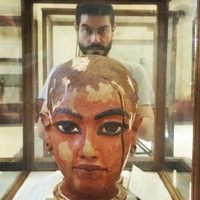
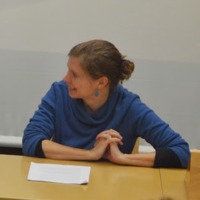





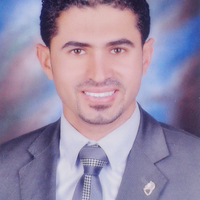



Uploads
Papers by Mattia Mancini
spedizioni scientifiche in Egitto. La raccolta si compone delle donazioni di cittadini ferraresi, che hanno scelto l’Egitto come luogo di residenza e lavoro o come semplice meta di viaggio, fatte alle collezioni dell’Università di Ferrara intorno alla metà del XIX secolo. Nel corso dei decenni successivi al 1850, infatti, sono arrivate in città, insieme a naturalia e reperti etnografici, decine di antichità egizie che hanno portato a una grande eterogeneità di contesti – funerari, cultuali e domestici – e di datazione, andando dall’Antico Regno al periodo greco-romano. La collezione egizia di Palazzo Schifanoia oggi è composta da circa 300 pezzi, quasi tutti mai pubblicati.
L'articolo presenta così la storia della formazione della collezione, ricostruita attraverso lo studio dei documenti d'archivio, e una selezione di oggetti ancora inediti.
This paper presents the preliminary report of the 2018 season of the expedition of the University of Pisa in the area of tomb M.I.D.A.N.05, at Dra Abu el-Naga (Theban Necropolis). The work focused on the archaeological investigation of two small tombs, T1 and T2, previously discovered during the 2010 season on the northern side of the forecourt of M.I.D.A.N.05 and probably contemporary or slightly later than the latter. During the 2018 campaign, the chapel of T1 and most of the first room of T2 were excavated, revealing two different life-stories, which depend on the events and transformations which affected M.I.D.A.N.05 and its forecourt through the centuries. T1, soon sealed by debris and flashfloods, proved to have been solely used in the New Kingdom. Between the end of the Eighteenth and the early Nineteenth Dynasty, the tomb was occupied by the "Chief of the mrw-servants of Amun", Nany, whose name appears on some sandstone fragments of a lintel and on a beautiful but regrettably fragmentary pair statue, found in pieces. T2 is larger and probably composed of two rooms. It remained accessible for many centuries, until the flood deposits filled it, covering a layer containing at least ten burials, partly cut by robbers' pits. Only scanty elements of the funerary assemblages were found with the bodies, but various painted plaster fragments, pertaining to anthropoid coffins, date the re-use of the tomb to the Third Intermediate Period.
Conference Presentations by Mattia Mancini
http://www.iice.it/component/content/article/8-pagine-dei-socii/103-xxi-convegno-di-egittologia-e-papirologia-programma-e-iscrizione.html
(webinar per il PRA “Un mare connesso”)
spedizioni scientifiche in Egitto. La raccolta si compone delle donazioni di cittadini ferraresi, che hanno scelto l’Egitto come luogo di residenza e lavoro o come semplice meta di viaggio, fatte alle collezioni dell’Università di Ferrara intorno alla metà del XIX secolo. Nel corso dei decenni successivi al 1850, infatti, sono arrivate in città, insieme a naturalia e reperti etnografici, decine di antichità egizie che hanno portato a una grande eterogeneità di contesti – funerari, cultuali e domestici – e di datazione, andando dall’Antico Regno al periodo greco-romano. La collezione egizia di Palazzo Schifanoia oggi è composta da circa 300 pezzi, quasi tutti mai pubblicati.
L'articolo presenta così la storia della formazione della collezione, ricostruita attraverso lo studio dei documenti d'archivio, e una selezione di oggetti ancora inediti.
This paper presents the preliminary report of the 2018 season of the expedition of the University of Pisa in the area of tomb M.I.D.A.N.05, at Dra Abu el-Naga (Theban Necropolis). The work focused on the archaeological investigation of two small tombs, T1 and T2, previously discovered during the 2010 season on the northern side of the forecourt of M.I.D.A.N.05 and probably contemporary or slightly later than the latter. During the 2018 campaign, the chapel of T1 and most of the first room of T2 were excavated, revealing two different life-stories, which depend on the events and transformations which affected M.I.D.A.N.05 and its forecourt through the centuries. T1, soon sealed by debris and flashfloods, proved to have been solely used in the New Kingdom. Between the end of the Eighteenth and the early Nineteenth Dynasty, the tomb was occupied by the "Chief of the mrw-servants of Amun", Nany, whose name appears on some sandstone fragments of a lintel and on a beautiful but regrettably fragmentary pair statue, found in pieces. T2 is larger and probably composed of two rooms. It remained accessible for many centuries, until the flood deposits filled it, covering a layer containing at least ten burials, partly cut by robbers' pits. Only scanty elements of the funerary assemblages were found with the bodies, but various painted plaster fragments, pertaining to anthropoid coffins, date the re-use of the tomb to the Third Intermediate Period.
http://www.iice.it/component/content/article/8-pagine-dei-socii/103-xxi-convegno-di-egittologia-e-papirologia-programma-e-iscrizione.html
(webinar per il PRA “Un mare connesso”)
https://www.unipi.it/index.php/archivio/event/6310-l-arrivo-di-antichita-egizie-a-livorno-nel-xix-secolo-e-il-ruolo-della-toscana-nella-nascita-dell-egittologia
https://djedmedu.wordpress.com/
L'intervento è parte del workshop "I social media per la cultura: istruzioni per l'uso" (Pisa, 1/12/2017), organizzato dall'associazione VOLO - Viaggiando Oltre L'Orizzonte (http://www.associazionevolo.it/), in collaborazione con l'Università di Pisa.
DaNAE rientra nell'ambito del progetto di ricerca "TEMA - la Toscana Egittologica tra Musei e Archivi", diretto dalla prof.ssa Marilina Betrò (Università di Pisa) e portato avanti dal dott. Mattia Mancini.
Per questo scopo, la tesi si avvale di uno studio etimologico del nome di Tefnut e un’analisi filologica della letteratura funeraria del periodo scelto. La lettura delle formule dei Testi delle Piramidi e dei Testi dei Sarcofagi evidenzia quanto l’accostamento della dea all’atmosfera umida sia tutt’altro che peculiare, mentre sottolinea l’importanza di Tefnut come controparte femminile del fratello/sposo Shu. Tale ruolo è fondamentale per la differenziazione sessuale del demiurgo androgino Atum e per la divisione dicotomica degli opposti nel pensiero egiziano.
Infine, un’appendice sull’epoca amarniana, supportata da fonti iconografiche, mostra che tale visione di Tefnut potrebbe essere stata ripresa da Akhenaton per la rappresentazione della regina Nefertiti.
https://www.nationalgeographic.it/piramide-di-cheope-scoperto-un-nuovo-corridoio-in-una-delle-sette-meraviglie-del-mondo-antico
Bloomsbury Academic (London/New York 2020), 384 pp ., 38 illus. ISBN: 978-1-78831-339-1, £110.00 ( hardback; alternative formats available)
Poster for the Symposium "Reading reuse. Image recycling in Egypt and beyond" (IFAO, Cairo - October 30th-November 2nd 2023)